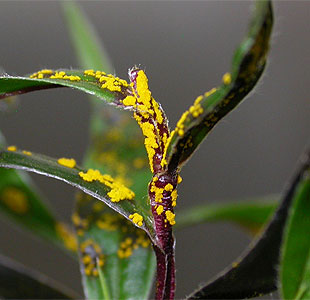|
Member of the Poaceae family.
Form: Grass Origin: Native to tropical east Africa Weed Type: Weed, Noxious Weed, Naturalised, Introduced, Garden Escape, Environmental Weed, Cultivation Escape
Kikuyu
is a very common weed or problem in most gardens throughout not only Victoria,
but all over Australia. This grass loves the Australian climate and absolutely
thrives is the warmer months, being a warm season grass.
|
Kikuyu is
a perennial ground-hugging grass which spreads by runners. It is cultivated for
pastures, lawns and playing fields and is a common weed of gardens and roadsides.
It is recognised as a weed in Queensland, NSW, Victoria, South Australia and
Western Australia. It is not known to produce viable seeds in South Australia
but persists and spreads from deliberate plantings and sites where garden waste
is dumped. It was used for erosion control on Montague Island off the south
coast of NSW but became so dense that it impeded nesting and access to burrows
of the Little penguin (Eudyptula minor). The NSW National Parks and Wildlife
Service has initiated a major control program.
This weed
problem can be controlled or maintained simply by physically removing the grass
as soon as it is detected, or once it has gotten out of hand a little more it
can be sprayed using a regular poison from your local hardware store.
References: Randall, R. P. (2002). A Global Compendium of Weeds. R. G. & F.J. Richardson, Melbourne.
References: Randall, R. P. (2002). A Global Compendium of Weeds. R. G. & F.J. Richardson, Melbourne.
Examples:






 As it happened...
As it happened... Signs of hope arising.
Signs of hope arising. From the ashes.
From the ashes.  As the days went by the future seemed brighter.
As the days went by the future seemed brighter. This is an example of Myrtle rust.
This is an example of Myrtle rust.